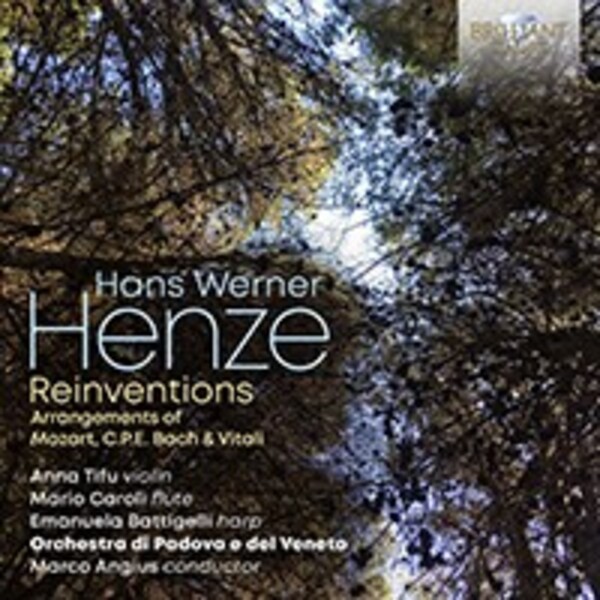
Henze - Reinventions: Arrangements of Mozart, CPE Bach & Vitali
£9.45
In stock - available for despatch within 1 working day
Despatch Information
This despatch estimate is based on information from both our own stock and the UK supplier's stock.
If ordering multiple items, we will aim to send everything together so the longest despatch estimate will apply to the complete order.
If you would rather receive certain items more quickly, please place them on a separate order.
If any unexpected delays occur, we will keep you informed of progress via email and not allow other items on the order to be held up.
If you would prefer to receive everything together regardless of any delay, please let us know via email.
Pre-orders will be despatched as close as possible to the release date.
Label: Brilliant Classics
Cat No: 97077
Format: CD
Number of Discs: 1
Genre: Orchestral
Release Date: 27th October 2023
Contents
Works
Il Vitalino raddoppiatoI sentimenti di Carl Philipp Emanuel Bach
Mozart'sche Orgelsonaten (3)
Artists
Anna Tifu (violin)Mario Caroli (flute)
Emanuela Battigelli (harp)
Orchestra di Padova e del Veneto
Conductor
Marco AngiusWorks
Il Vitalino raddoppiatoI sentimenti di Carl Philipp Emanuel Bach
Mozart'sche Orgelsonaten (3)
Artists
Anna Tifu (violin)Mario Caroli (flute)
Emanuela Battigelli (harp)
Orchestra di Padova e del Veneto
Conductor
Marco AngiusAbout
For the Drei Mozart’sche Orgelsonaten, Henze takes up three of Mozart’s one-movement Kirchensonaten (church sonatas or trio sonatas). Sonatas 17 and 15 are in an Allegro tempo, whereas the Sonata K67 is marked Andantino, so Henze, in his transcription, places the latter between the two livelier tempos, thus reconstructing the tripartite structure of a classical three-movement sonata. Scored for an ensemble of 14 players that includes the less common, softer variants oboe d’amore and viola d’amore, it aims to underline the darker instrumental timbres, favouring the sombre sonorities of the alto flute in G, the bass flute in C, the bass clarinet and the bassoon.
During the last year of his life, in 1787, Carl Philipp Emanuel Bach composed a Fantasia libera per tastiera sola (Free Fantasia for keyboard alone) which he expanded into the Clavier-Fantasie mit Begleitung einer Violine (Fantasy for harpsichord with violin accompaniment), one of his most personal and expressive works. Henze transcribed it for solo flute, harp and strings, aiming to project the extremely interesting and expressive harmonic material of the composition into a larger instrumental apparatus, thus making its future-oriented harmonic structures more manifest and moulded. He proposed two options for division of the: string quartet + string quintet or string quartet + tutti (the latter version is recorded here).
Although it was probably composed in the early 18th century, Vitali’s Ciaccona ‘Il Vitalino’ – whose musical form is inspired by dance and consists of variations on a ground bass – was only rediscovered in 1867, published by the German virtuoso violinist Ferdinand David. Henze’s Il Vitalino raddoppiato – called “raddoppiato” (“doubled”) because of his extension of the composition by means of interpolated variations of each original section in the style of 18th-century doubles – retains Vitali’s bass almost throughout the entire composition. It alternates Vitali’s variations on his chaconne theme with Henze’s variations of Vitali’s variations, in an ever-changing dialogue between the 18th-century past and Henze’s present.
Error on this page? Let us know here
Need more information on this product? Click here